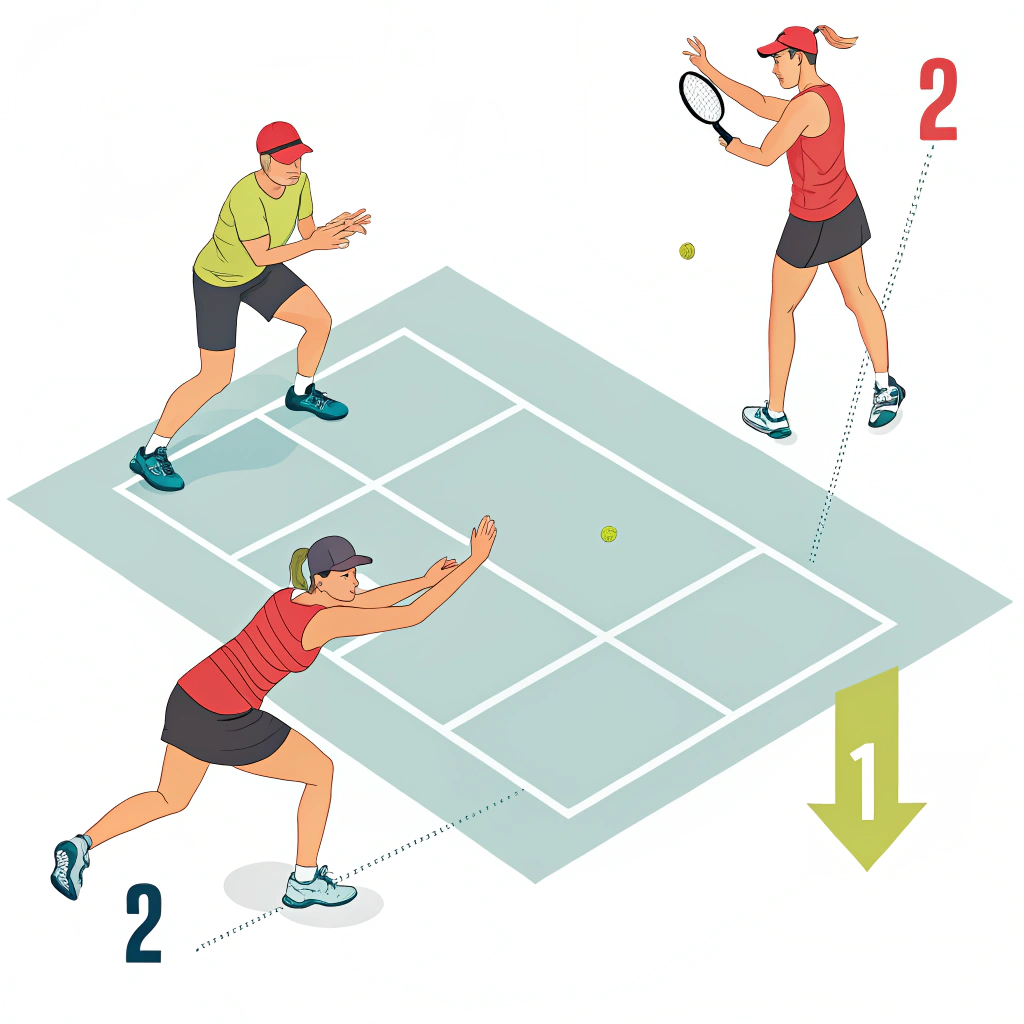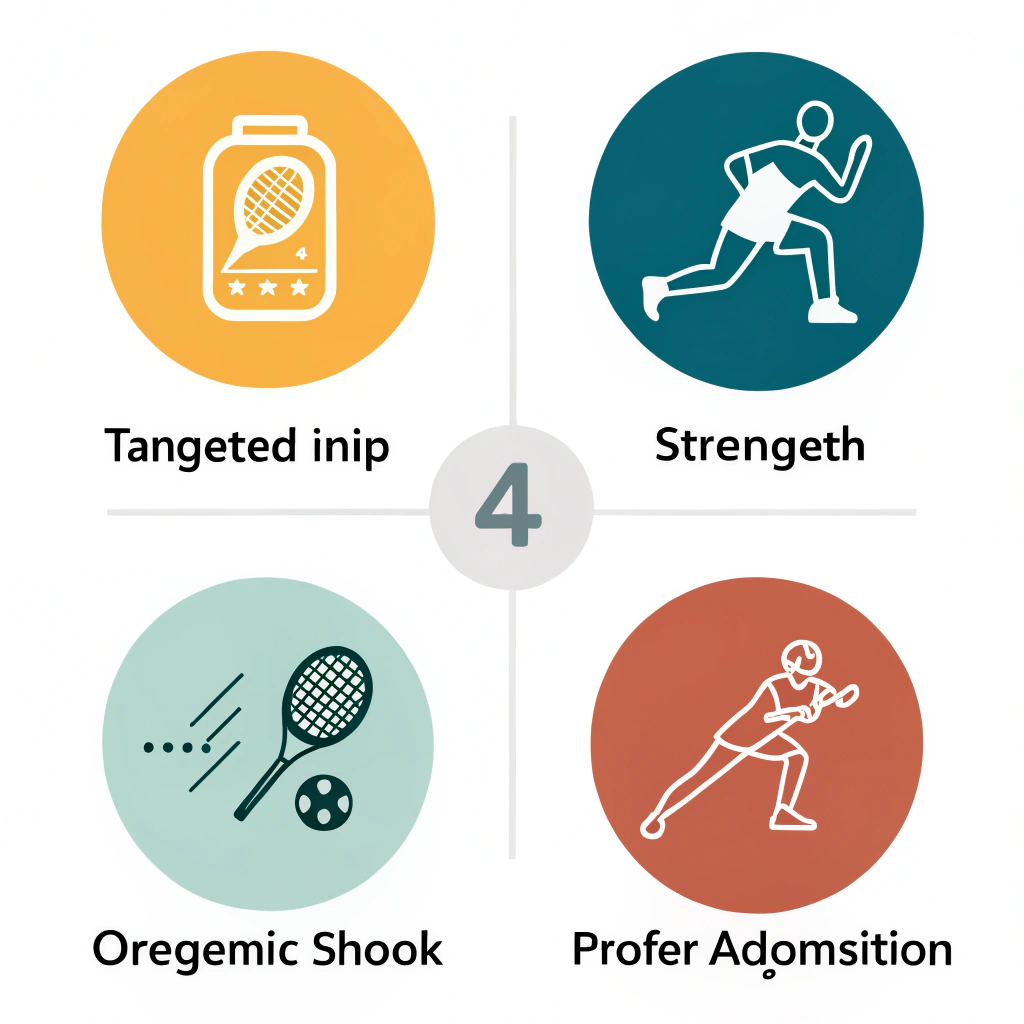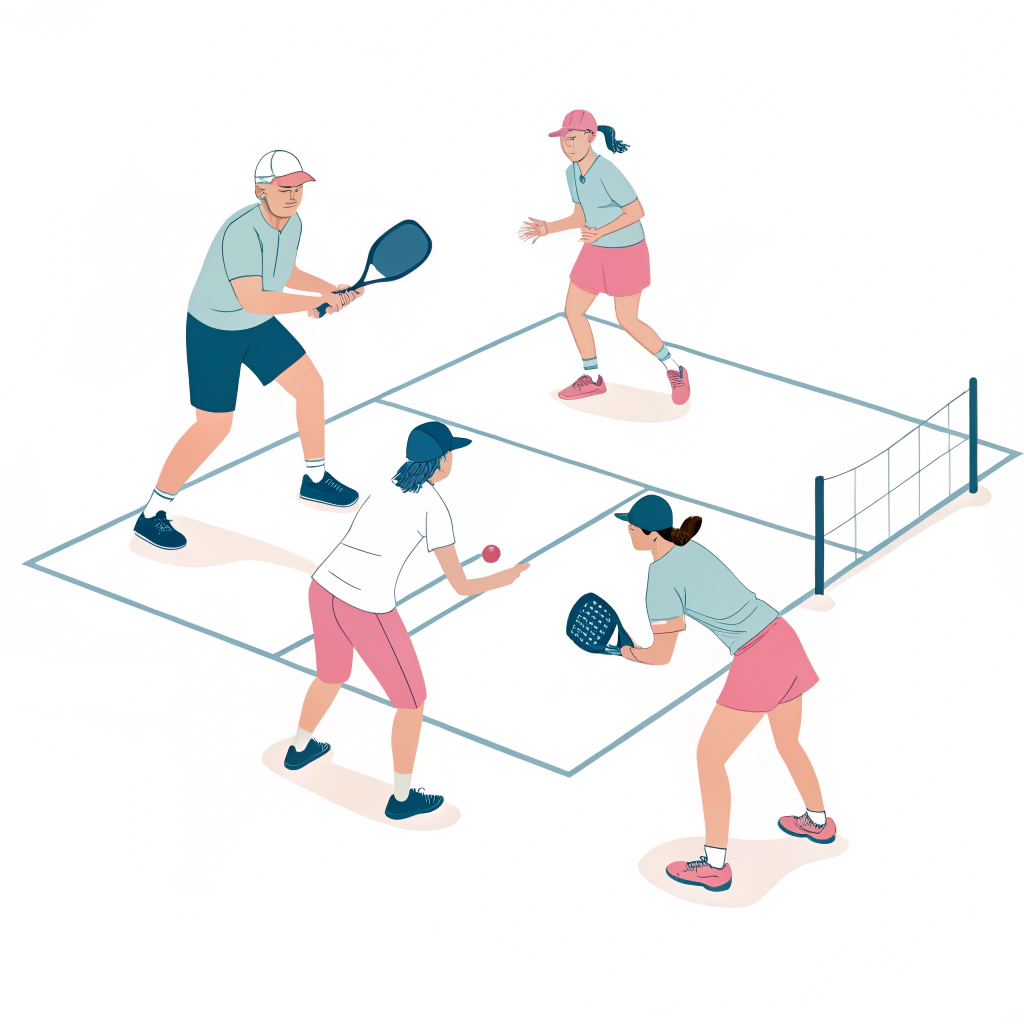Pickleball players can significantly reduce the risk of foot and ankle injuries by combining proper warm-up routines, targeted strength exercises, suitable footwear, and smart on-court strategies.
In the fast-paced game of pickleball, the nature of the sport itself creates a fertile ground for injuries, particularly foot and ankle problems. Many sports facilities and pickleball clubs face recurring issues that lead to high downtime due to sprains, strains, or even more severe injuries. This article provides practical and evidence-based guidelines aimed at managers, operators, and safety officers to prevent these injuries and maintain peak athletic performance among players.
Pickleball requires rapid direction changes, repetitive lateral movements, and sudden bursts of speed, all of which put stress on the lower extremities. Hard court surfaces worsen these risks by amplifying the impact forces that the players’ feet and ankles must absorb during play. When players do not prepare adequately through physical conditioning or do not use proper equipment, such stress can lead to conditions like Achilles tendonitis, heel pain, and ankle sprains.
To effectively mitigate risks, it is crucial to understand why these injuries occur:
-
Repetitive Impact and High-Intensity Movements:
The continuous pounding on the hard surface increases stress on the soft tissues of the feet and ankles. Over time, this repetitive impact can lead to chronic injuries. -
Sudden Direction Changes:
The lateral and diagonal movements common in pickleball challenge the ankle’s stability, significantly raising the risk of sprains and strains. -
Improper Technique and Inadequate Warm-Ups:
Without sufficient preparation, muscles and ligaments may not be adequately warmed up, leading to a higher likelihood of injuries. Poor training techniques also compound this risk. -
Unsuitable Footwear:
Proper footwear is essential for distributing forces evenly across the foot. Shoes that lack appropriate cushioning or stability can exacerbate stress on the lower extremities. -
**Underlying Biomechanical Imbalances1:
Players with pre-existing biomechanical issues or previous injuries are more susceptible to new injuries. For example, improper gait patterns or foot alignment issues can lead to uneven pressure distribution.
Based on the causes identified, here are actionable strategies that can help reduce the risk of foot and ankle injuries in pickleball:
A well-structured warm-up routine is essential:
- Dynamic Warm-Ups: Engage in light cardio coupled with dynamic stretching routines targeting the lower body.
- Sport-Specific Drills: Incorporate movements that mimic game-like scenarios, such as side shuffles and short sprints.
Strengthening the muscles around the ankles and feet can improve stability and resilience:
- Ankle Circles: Rotate each ankle in both clockwise and anticlockwise directions.
- Heel Raises: Stand on the edge of a step, lift your heels, and slowly lower them below the step level.
- Heel-to-Toe Walking: Walk in a straight line, placing your heel directly in front of the toe of your opposite foot.
- Toe Tapping Drills: Rapidly tap your toes on a flat surface to enhance muscular endurance.
- Balance Exercises: Simple one-leg stand or use of balance boards can significantly enhance stability.
These exercises not only help prevent injuries but also improve overall athletic performance by providing better control over foot movements during rapid game situations.
Investing in quality pickleball safety gear2 is crucial:
- Shock Absorption: Shoes with adequate cushioning disperse impact forces.
- Ankle Support: High-quality athletic shoes provide necessary lateral support to reduce the risk of sprains.
- Custom Fit: Facilities should consider partnering with suppliers who offer custom or on-demand printed options to cater to various player needs, enhancing both performance and injury prevention.
Adjusting training protocols and using proper techniques can help minimize injury risks:
- Technique Coaching: Regular sessions with trained professionals can correct form and prevent overuse injuries.
- Rest and Recovery: Ensure players have sufficient rest periods between training sessions to allow muscles and ligaments to recover.
- Ergonomic Design3: Courts and training areas should be designed with safety in mind, incorporating features that reduce the risk of slips or falls.
Incorporate routine health evaluations to address any early signs of injury:
- Screening Programs: Implement periodic screening for biomechanical imbalances.
- Injury Logs: Track injuries to identify patterns and adjust training protocols accordingly.
These prevention techniques not only safeguard player health but also contribute to a more sustainable and competitive environment for pickleball enthusiasts.
| Strategy | Key Actions | Benefits | Considerations |
|---|---|---|---|
| Warm-Up & Dynamic Stretching | Light cardio, dynamic stretches, sport-specific drills | Prepares muscles, enhances mobility | Must be tailored to individual needs |
| Targeted Strengthening Exercises | Ankle circles, heel raises, balance drills, toe tapping | Improves stability, reduces injury risks | Regular practice required |
| Proper Footwear & Equipment | Quality shoes with shock absorption and ankle support | Reduces impact, provides better support | Can be cost-intensive |
| Training & Ergonomics | Coaching, technique correction, Ergonomic Design3 considerations | Improves form, minimizes repetitive strain | Requires ongoing monitoring |
| Health Assessments | Routine screening, injury tracking | Early detection of potential injuries | Needs commitment from teams |
This table provides a clear overview of the prevention measures, helping facility managers and club operators easily implement these strategies.
Multiple studies from the field of sports medicine4 have shown that structured warm-up routines and targeted strength training significantly reduce the incidence of lower extremity injuries. For instance, facilities that incorporated regular ankle strengthening exercises reported a lower rate of injuries related to repetitive stress. One popular case study noted that after implementing a routine that combined dynamic stretching with balance-enhancing drills, one club experienced a 30% reduction in ankle-related injuries over a season.
Furthermore, feedback from professional training sessions reveals that combining these targeted exercises with proper footwear significantly lowers the risk of overuse injuries. Implementing such strategies in both recreational and competitive settings can help maintain player safety while keeping productivity high at sports facilities.
-
Develop a Standardized Warm-Up Routine:
Create a routine that all players must follow before games and practice sessions. This routine should incorporate dynamic stretches, balance drills, and sport-specific movements. -
Schedule Periodic Training Workshops:
Conduct monthly or quarterly workshops focused on proper technique, injury prevention, and recovery. Invite sports medicine experts to demonstrate effective strengthening exercises. -
Invest in Equipment and Technology:
Consider using advanced footwear designed for high-impact sports. Partnering with manufacturers like NEX Pickleball, who apply cutting-edge production techniques, can ensure that players receive ergonomic designs that significantly reduce risk. -
Monitor Player Health:
Use injury tracking software5 and periodic health assessments to monitor the well-being of players. Early detection of any imbalances or potential injuries allows for timely interventions. -
Customize Programs Based on Player Feedback:
Regular feedback sessions with players can help identify specific needs and concerns. Customizing warm-up and exercise routines based on this feedback can lead to improved safety outcomes. -
Promote Continuous Education:
Provide educational resources on the biomechanics of movement and the importance of correct form and equipment usage. Keeping everyone informed encourages a culture of safety and proactive prevention.
In summary, foot and ankle injury prevention in pickleball is achievable with a proactive approach that combines warm-up routines, strengthening exercises, proper footwear, and smart training practices. These measures not only protect players but also enhance overall athletic performance, ensuring that clubs and sports facilities can operate smoothly without the disruption of frequent injuries.
By integrating these strategies into daily routines and training regimes, managers and operators can create a safer, more sustainable environment for all players. The investment in comprehensive injury prevention is not just about reducing downtime—it is also about fostering a culture of well-being and continuous improvement. Facilities that prioritize player safety are better positioned to sustain high levels of performance and achieve long-term success.
For those in the sports industry looking to elevate their safety protocols, these guidelines offer a clear pathway to enhanced future-proofing of your training programs and facility management strategies.
How to strengthen ankles for pickleball?
Strengthening ankle muscles is key to injury prevention. Incorporate exercises such as ankle circles, heel raises, heel-to-toe walking, toe tapping, and balance drills. These exercises help improve stability and resilience, ensuring better performance on the court.
Why do my ankles hurt when I play pickleball?
Ankle pain while playing pickleball often results from repetitive impact on hard court surfaces and rapid side-to-side movements. These factors can lead to conditions like Achilles tendonitis or ankle sprains due to the extra strain placed on the lower extremities during play.
What is the number one cause of injury in pickleball?
The most common injuries in pickleball are typically due to either sudden accidents—such as falls or slips during rapid movements—or repetitive use injuries from the sport’s high-impact nature, which stresses the lower extremities over time.
-
Biomechanical Imbalances: Click to read an article on how understanding biomechanical imbalances can help in identifying and correcting movement patterns to reduce injury risks and enhance athletic performance. ^↩ ↩
-
Pickleball Safety Gear: Click to learn more about selecting and investing in specialized safety gear designed for pickleball, ensuring optimal shock absorption and ankle support. ^↩ ↩
-
Ergonomic Design: Click to explore the principles of ergonomic design and how it influences the planning and construction of safe, injury-mitigating sports facilities and training areas. ^↩ ↩ ↩2
-
Sports Medicine: Click to delve into the field of sports medicine and discover evidence-based practices that contribute to injury prevention and athletic health management. ^↩ ↩
-
Injury Tracking Software: Click to find out how injury tracking software can aid in early detection, trend analysis, and proactive management of sports-related injuries. ^↩ ↩







